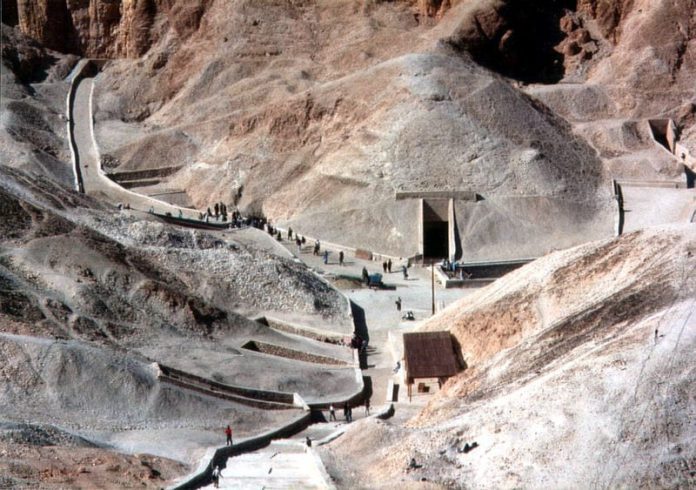An IoT sensor platform has helped a team of geologists from York University in Canada and the University of Zurich in Switzerland to monitor the stability of the terrain over the tomb of the 18th dynasty of pharaohs in the Valley of the Kings in Egypt.
The Valley of the Kings, an ancient necropolis where the tombs of most pharaohs are located, is considered one of the most important historical and touristic attractions in the world. It includes the tomb of Tutankhamun, who ruled at the end of the 18th dynasty.
Egyptian monuments are lost mainly due to degradation or cracking of building materials, weakness of soft soils, displacements along natural fractures in hard rocks or rock falls from steep cliffs. The stability of the slope being investigated is critical for the safety of tourists, excavation works, and the preservation of the area.
Various IoT sensors from Spain-based IoT module maker Libelium have been installed to record and map the horizontal displacement of the rock slabs due to thermal cycles. These include soil sensors, a weather station, and a dendrometer (typically used to measure tree growth). Originally designed for smart agriculture, they have been modified to detect changes in fractures in the rock.
Sensors recording wind speed, wind direction, precipitation, solar radiation, and crack displacement, all installed west of the slab; sensors for wetness (condensation) and rock temperature were placed just behind the back of the rock slab.
The weather station and ‘crack meter’ were deployed 10 months ahead of time to collect systematic climatic data, respectively around the crack aperture and relative humidity and temperature. Researchers developed a numerical model with different software and hardware tools, including from Libelium, to measure the properties of the rock mass and the environmental conditions of the area.
The results have shown variations in climatic conditions are leading to the degradation of the state of the tomb. This research is also allowing researchers to understand and predict the relationship between climate change and the behavior of potential instabilities in the Valley of the Kings, said Libelium.
Rodrigo Alcaine Olivares, researcher from York University, commented: “Our team chose the Libelium system because it offered the best combination of sensors that could easily be interchanged for different projects, all designed to be housed outside in an easy to install package. Additionally, Libelium offered a good connectivity system which helps us to obtain data from very remote locations to send them to Canada.”
He added: “These characteristics assist in many ways in our investigation by saving time in connections and building systems up, to let ourselves focus on the analysis and interpretation of the phenomena we want to study mainly.“
Alicia Asín, co-founder and chief executive at Libelium, said: “IoT technology can contribute to preserve historical and artistic heritage connecting the physical and the digital world through sensors that send the information to the Internet and allow researchers to establish important conclusions for future conservation”.

